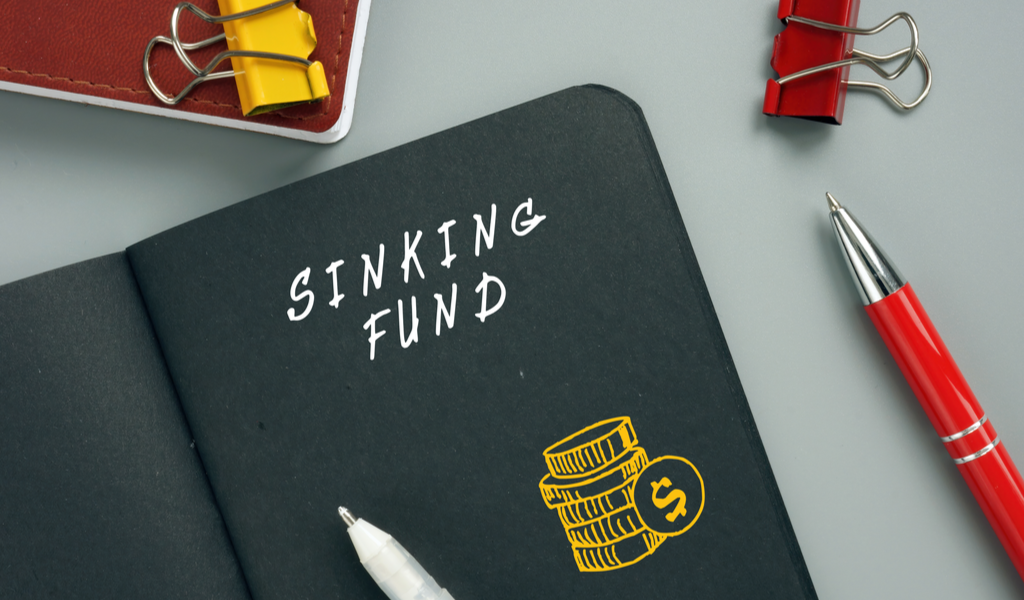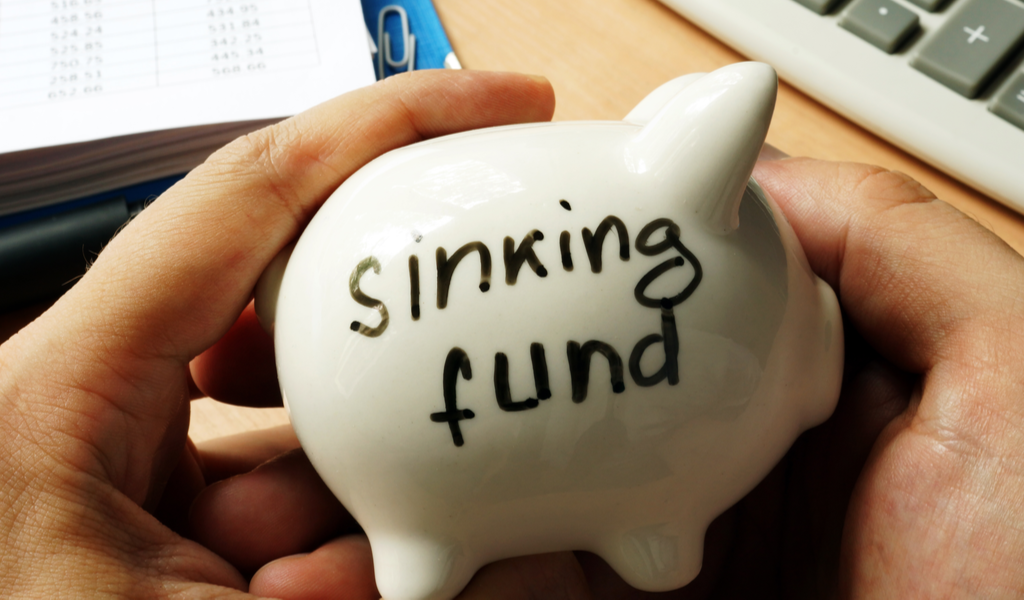When you know you have a major financial burden coming up in the near future, you can begin to save up for it in advance by contributing small chunks of money over time. In the world of personal finance, this is called a sinking fund.
This is a term that has been borrowed from corporate business lingo for when a company sets aside money in a sinking fund to fulfill financial obligations such as debt or bond repayment or in preparation for large capital expenditure.
But you don’t have to be a business owner to use the concept of a sinking fund to save money. Since it involves saving up small amounts of money to save up for a big expense, it is a great idea that ordinary folk to plan for the future, be it a financial goal, a future commitment, or recurring bills that don’t count as regular monthly expenses.

The Right Time for a Sinking Fund
A sinking fund is a great way to anticipate a large upcoming expense that may be difficult to manage if you don’t plan for it well in advance. This is especially important for those who do not have a stable income or do not have a great deal of disposable income each month.
For instance, if you are pregnant or planning to get pregnant soon, you should know that having a child is going to cost you a lot of money. By initiating a sinking fund, you can set aside small amounts of money as you can afford every month so that you can use that money when the baby comes. If you neglect to plan ahead, you may be staring at the face of massive debt in the future.
A sinking fund makes big expenses more manageable and you can spend the money without feeling any guilt because you’ve saved it for that specific purpose. For example, you might be planning a special trip for your anniversary. Instead of charging it all on your credit card, you can save for it in the upcoming months and enjoy your time away without worrying about money. You can also continue fulfilling other financial obligations like debt payments and saving for retirement without pause with the help of your sinking fund to maintain such large expenses.
A sinking fund is also ideal if you do not know exactly how much you would earn every month. You can set aside extra money during the high-earning months to help you ride out the months when you don’t earn as much. Since a varying income makes it difficult to follow a budget, a sinking fund can help you make up the difference when needed.
Sinking Fund vs. Emergency Fund
If you’ve been reading everything so far thinking that a sinking fund sounds a lot like an emergency fund, you aren’t entirely wrong. However, one of the biggest differentiation factors between the two is that a sinking fund is set up for a specific purpose or expense that you are anticipating while an emergency fund is meant to cover unexpected expenses that may pop up suddenly.
In short, emergency funds should only be utilized in circumstances that are urgent, immediate, unexpected, and important. Sinking funds, on the other hand, are planned for and can be for any purpose.
To put it into perspective, here are two examples of situations where you would use either fund. Planning a trip home to surprise your parents for the holidays will need a sinking fund, whereas an unexpected trip home to visit a suddenly ill parent can be paid for using your emergency fund.
That’s why it’s important to have both an emergency fund and a sinking fund. They are not the same!
Types of Sinking Funds You Can Add to Your Budget
You can add multiple sinking funds to your budget based on your personal requirements in the future. There are generally three types of sinking funds:
- Planned goals: Typically, one-time expenses that you can budget for and stop saving once the goal is reached. E.g., weddings, vacations, down payments for a new house or car, etc.
- Recurring costs: Costs that you know will come up around the same time every month, such as back-to-school expenses, Christmas gifts, home or car insurance premiums, subscription renewals, self-employment taxes, etc.
- Indeterminate future expenses: When you don’t know when or how much exactly certain expenses may come up, but you know that you will have to pay for them some time in the future, they fall under this category. These may include medical expenses, home, and car repairs, maintenance, etc.

How to Calculate a Sinking Fund
The first step to setting up a sinking fund is to figure out how much you actually need. Then you can divide that amount by the number of months that you have until the anticipated expense to arrive at the amount you need to save per month. For instance, if you are planning a Christmas vacation and it’s still only February, you have 10 months to go. Assuming you wish to save $1,000 for it, that means you need to set aside $100 per month into your Christmas vacation sinking fund.
Where to Save Money with a Sinking Fund
Since sinking funds are often meant for short-term purposes, you will want to put the money somewhere where you can easily access it. A high-yield savings account or money market account would be ideal in such an instance. You can also make use of budgeting apps to set funds aside for a number of sinking funds digitally. Or if you prefer to do so, you can also save your sinking fund in cash.
For longer-term goals, you can also choose a certificate of deposit or CD to store your sinking fund. The advantage to a CD is that the money will grow as it sits. However, the disadvantage is that you need to be certain of when you will need the money as withdrawing a CD before its date of maturity will result in penalty charges.
And if you’re a risk-taker, you could even go for a brokerage account. However, experts typically do not recommend it for sinking funds due to the probability of losing it all because of the highly volatile nature of the stock market.
How to Successfully Saving with Sinking Funds
In order to be successful in saving for the future using sinking funds, you need to keep a few things in mind.
- Make sure to keep your sinking fund in a separate account from your main checking account to avoid the temptation to spend it.
- Setting up automatic transfers or direct deposits into your sinking fund accounts helps to keep you from forgetting or neglecting to contribute to them every month.
- Be realistic about the things you want to save for with sinking funds. It’s not possible to make sinking funds for every single thing you may want, so it’s important to prioritize the important expense, such as taxes and insurance bills over wants like fancy vacations.
- Consider your personal financial situation to ensure that the plan you draw up for your sinking funds is feasible. Your sinking funds should be based on how much you can actually afford to put aside. After all, money isn’t going to appear out of thin air!
- If you receive any extra money, say from a bonus at work or tax refund, make sure to add on to your sinking funds instead of spending it frivolously.
- Giving your sinking fund a name that correlates to its purpose, i.e., “my dream home” or “our bundle of joy” can help you stay motivated to keep saving and not access that money for anything else.



